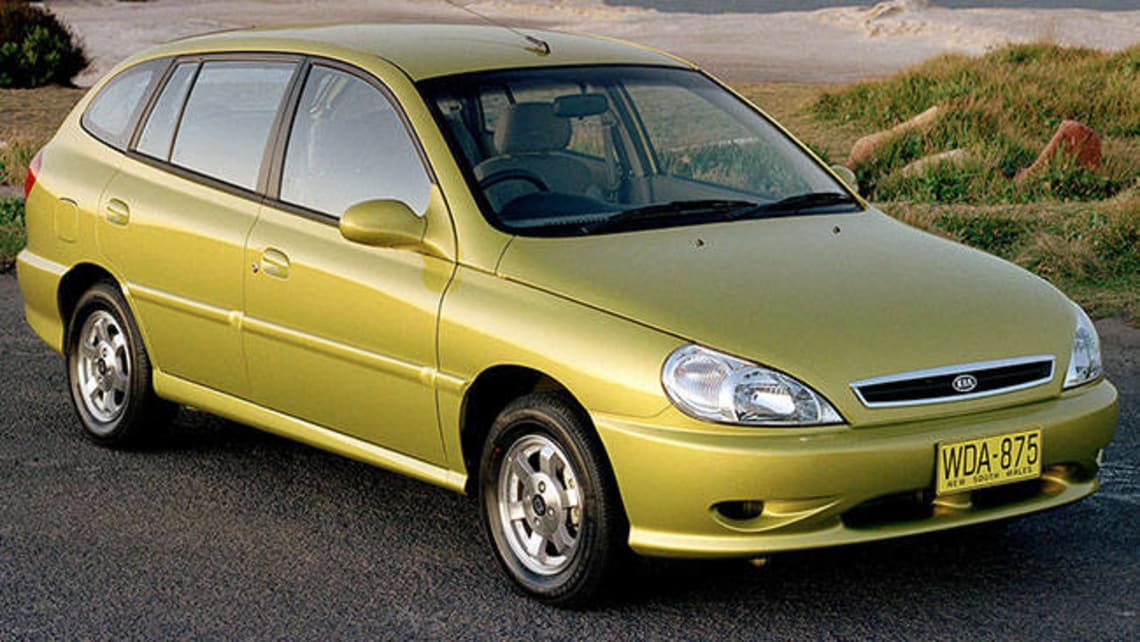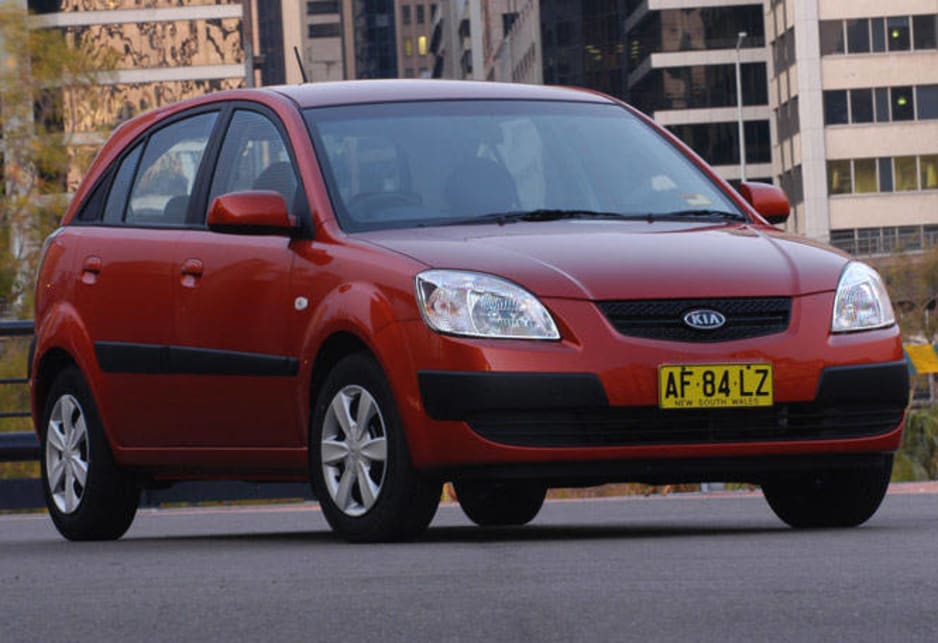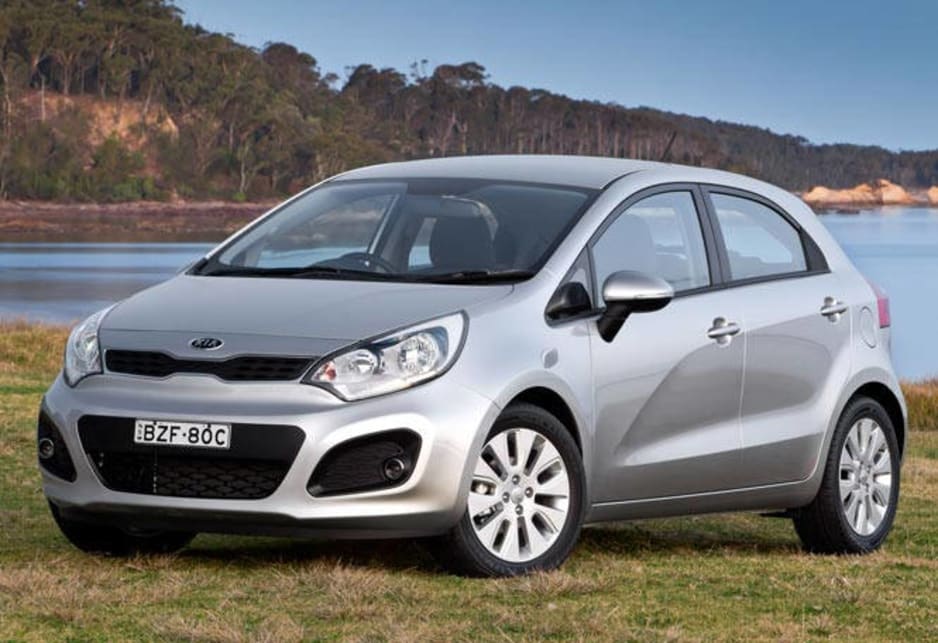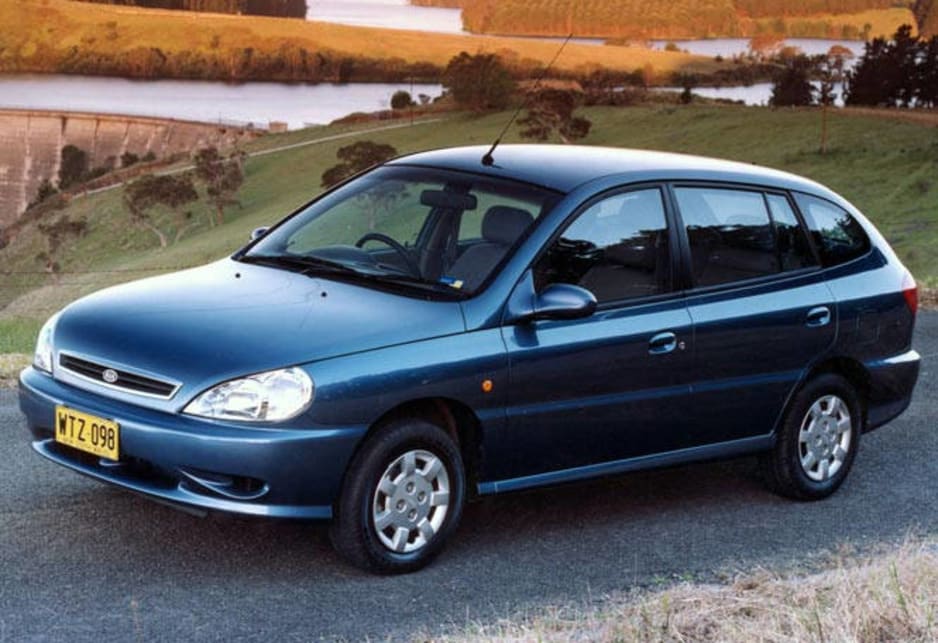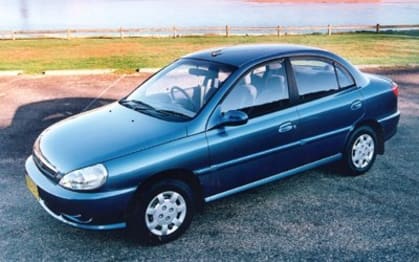
Used Kia Rio review: 2000-2012
- Kia Rio
- Kia Rio 2004
- Kia Rio 2006
- Kia Rio 2007
- Kia Rio 2012
- Kia Rio 2011
- Kia Rio 2000
- Kia Rio 2001
- Kia Rio 2002
- Kia Rio 2003
- Kia Rio 2005
- Kia Rio 2008
- Kia Rio 2009
- Kia Rio 2010
- Kia Rio Reviews
- Kia Reviews
- Kia Hatchback Range
- Kia Sedan Range
- Hatchback
- Sedan
- Kia
- Used Car Reviews
Kia Rio is a small-medium South Korean car that has picked up significantly in Australia since the launch of the all-new model of September 2011. After two generations of Rios with conservative shapes, the 2011 Rio came with stunning styling that pushes it ahead of many competitors from Japan and Europe from a visual point of view.
Build quality wasn’t too bad on the first generation Rios, sold from July 2000, improved significantly in the gen-two cars from August 2005 and is impressive from 2011 onwards. The bodies of the older models were generally better assembled than their interiors, though we do see the occasional rough one inside and out.
Tip: Don’t forget that professional inspection.
The Kia Rio is sold as either a four-door sedan or a five-door hatchback and has good interior space that can seat four adults, though two grownups and two or three kids is a more practical load.
On-road dynamics and build quality have improved over the years and the latest models provide a fair degree of enjoyment for the keen driver. However, some may find the ride a little too firm on rough roads. Try it for yourself during your private road test.
A good set of tyres can work wonders for the handling and steering feel of older Kia Rios.
Kia Rio is powered by a 1.5-litre four-cylinder engine in the pre-2005 series. If worked moderately it will sound and feel fine, but drive it hard and it gets noisy and can be harsh. Engine performance is generally fine as this is a relatively light car. But it can struggle a bit on hills, so it's smart to find a hilly area to do some of your pre-purchase road testing.
The newer, from 2005, Rios have a more modern 1.6-litre four-cylinder engine that’s significantly more powerful, smoother and significantly better in the refinement stakes. The engine was further improved in the 2011 series Rios.
A lower cost 1.4-litre engine was added to the range in March 2007, its performance is OK if you’re willing to work at getting the best from the car.
Transmission options are five-speed manual and four-speed automatic in the first two Rio ranges. Six-speed units, both manual and automatic were a big feature of the all-new model that arrived in 2011, putting the car ahead of many of its rivals.
The four-speed auto takes the edge of what performance the older engines do deliver. It’s smooth enough and obviously makes life simpler in the suburbs, the natural habitat of a vehicle like this.
The experienced home mechanic can do a fair bit on a Kia Rio. Underbonnet access is good and these cars have old and tried technology. A workshop manual is a low-cost investment that can save you lots of hassles. Don’t do any safety-related work yourself, leave that to the professionals.
Insurance is normally towards the lower area of mid-range, but seems to vary more than usual from one company to another. So it pays to shop around, as always make sure you understand what you get, and don’t get, for your premium.
WHAT TO LOOK FOR
Poorly repaired crash damage will show as paint which doesn’t match from panel to panel; and/or a ripply finish in a panel. Check for tiny specks of paint on non-painted parts such as glass and badges. Look at the interior and boot for signs of general wear and tear.
The engine should fire up within a second or so of the key being turned, even when it’s cold. As soon as it starts it should settle into a steady idle. There should be no smoke from the exhaust pipe even if the engine is worked hard. Letting it idle for about a minute, then flooring the throttle in a quick takeoff will aggravate the problem.
A manual gearbox should be moderately light in its action and not crunch on any of the downchanges, no matter how fast they are made. The third-to-second gearchange is usually the first to give trouble. If the automatic transmission is slow at picking up a drive gear from Park or Neutral it may be because it’s due for a major overhaul.
Check the brakes pull the Rio up squarely and that ABS, if fitted, operates when you push the pedal hard.
CAR BUYING TIP
Cars that have spent all their lives in the open air are far less desirable than those that have generally been kept under cover. Faded paint and dried out dashtops are the easiest way to pick ‘outdoor’ cars.
Pricing
| Year | Price From | Price To |
|---|---|---|
| 2012 | $4,400 | $10,120 |
| 2011 | $4,070 | $9,570 |
| 2010 | $3,850 | $7,590 |
| 2009 | $3,740 | $7,260 |
| 2008 | $3,080 | $6,710 |
| 2007 | $2,750 | $5,830 |
| 2006 | $2,640 | $4,840 |
| 2005 | $2,530 | $4,510 |
| 2004 | $2,420 | $4,290 |
| 2003 | $2,200 | $3,960 |
| 2002 | $2,040 | $4,070 |
| 2001 | $2,040 | $3,850 |
| 2000 | $2,040 | $3,850 |
Pricing guides
Range and Specs
| Vehicle | Specs | Price* | |
|---|---|---|---|
| (base) | 1.5L, ULP, 4 SP AUTO | $2,200 – 3,520 | 2000 Kia Rio 2000 (base) Pricing and Specs |
| (base) | 1.5L, ULP, 4 SP AUTO | $2,200 – 3,520 | 2000 Kia Rio 2000 (base) Pricing and Specs |
$2,200
Lowest price, based on third party pricing data


